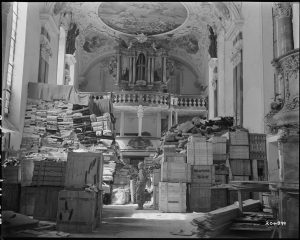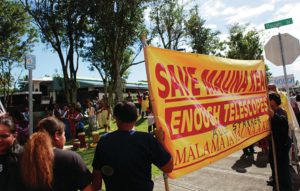Under the rule of Adolf Hitler, the Nazi’s looted thousands of items throughout Europe as Germany expanded its empire from 1933-1945. Hitler had long been infatuated by art and before he became the Fuhrer of Germany, he was a young artist unsuccessfully attempting to study at the Academy for Art Studies in Vienna in 1907. Hitler’s love of art did not disappear as he rose to power, stoling nearly 20% of Europe’s art or over 750,000 pieces of artwork during the war. In some of the largest thefts of art history in the world, the Nazi leaders used the inventories of Europe’s elite museums as “shopping lists,” pilfering through priceless pieces of artwork just to add to their personal collections. Hermann Goring, Nazi Leader and art enthusiast, visited the Jeu de Paume museum in Paris 20 times to look at its work and choose what he wanted to take. And because there are were no laws or rules to looting, he seized hundreds of items, needing two additional railroad cars just haul back the new additions to his personal collection. While the Nazi’s were not the first to loot art, they do serve as a great example of how devastating the cultural destruction can be if museums and cultural property are not protected during armed conflict. As a result of the overwhelming Nazi Looting during the second world war, the Hauge Convention for the Protection of Cultural Property in the Event of Armed Conflict was signed in 1954, ensuring that a country’s cultural property will not be threatened during wartime.

As the first international treaty of its kind, the Hauge Convention requires the 127 states that ratified the treaty to adopt protective measures for cultural property during times of war. Cultural property is defined as the expression of cultural heritage of a group or society and can take the form of artwork, monuments, manuscripts, books, etc. The protection of cultural property is important during times of war because as this property reflects the life, history, and identify of the community, its looting/destruction would take a piece of that community away, making the re-building phase after the war an even harder task. The convention requires the establishment of special units within the military to protect the cultural protect when a conflict breaks out and US provided a great example of a successful military protection during the Gulf War. When the US became involved in the Gulf War, they published a “no-fire target list” of places known to have cultural property, in order to protect the involved country’s heritage amidst the fighting. While not all protective measures from the Hauge Convention are successful during war, the treaty is important because it legally shows the need to protect a culture’s heritage from the devastating looting, something the Nazi’s did not care for as they stole thousands of pieces of cultural heritage during the second world war.

Sources:
- https://www.archives.gov/research/holocaust/records-and-research/documenting-nazi-plunder-of-european-art.html
- https://www.ifar.org/upload/pdffile4470e6140762bbifar_heritige.pdf
- http://www.history.com/news/the-real-life-story-behind-the-monuments-men
- https://www.archives.gov/research/holocaust/records-and-research/documenting-nazi-plunder-of-european-art.html
- http://www.culturesyndicates.co.uk/2015/03/museums-during-war-and-peace-places-of-protection-and-destruction/
Additional Readings:


